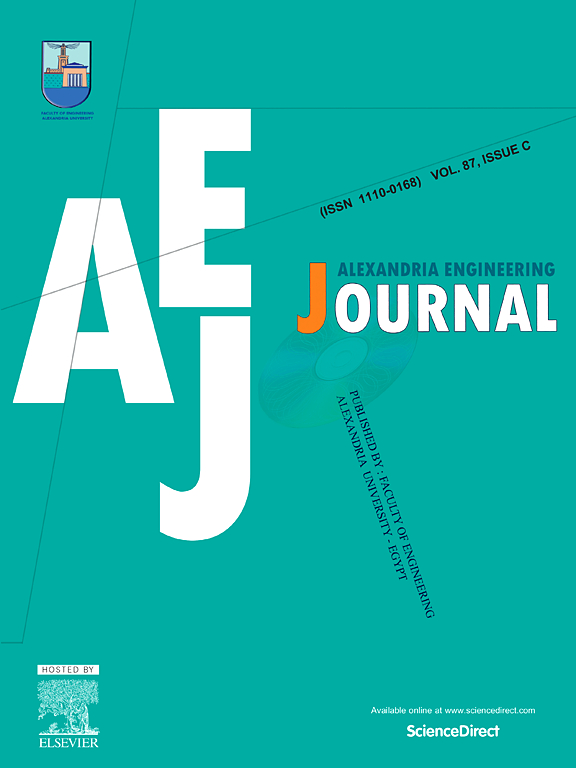基于云的网络物理系统的可解释人工智能在安全物联网网络钓鱼分类中的应用
IF 6.2
2区 工程技术
Q1 ENGINEERING, MULTIDISCIPLINARY
引用次数: 0
摘要
物联网是一种技术,可帮助各种设备通过互联网实现互联,以替换数据、监控设备和增强执行器,从而创造成果。网络物理系统(CPS)包含控制和计算组件,这些组件与物理程序紧密相连。互联网在现代生活中扮演着重要角色,网络钓鱼攻击带来的网络安全挑战十分严峻。本研究提出了一种利用机器学习(ML)方法进行钓鱼网站分类的新方法来解决这一问题。利用特征提取和创新算法,该方法旨在通过网络钓鱼尝试的特征和分析固有模式来区分恶意网站和合法网站。网络钓鱼是一种重大威胁,每年都会给互联网用户造成大量经济损失。这种欺诈行为包括身份黑客利用巧妙的方法欺骗个人泄露敏感数据。一般来说,网络钓鱼者会使用先进的网络钓鱼软件和虚假电子邮件等策略,非法获取金融账户中的用户名和密码等机密信息。本文在安全网络物理系统上开发了一种网络钓鱼分类中的可解释人工智能与 Aquila 优化算法(XAIAOA-WPC)方法。所开发的 XAIAOA-WPC 方法主要强调基于 CPS 的网络钓鱼的有效分类和识别。在第一阶段,预处理分为三个层次:数据清理、文本预处理和标准化。此外,还采用基于哈里斯鹰优化的特征选择(HHO-FS)方法得出特征子集。XAIAOA-WPC 方法利用基于多头注意力的长短期记忆(MHA-LSTM)模型进行网络钓鱼识别。此外,还利用 Aquila 优化算法(AOA)模型增强了 MHA-LSTM 方法的检测结果。最后,XAIAOA-WPC 方法结合了 XAI 模型 LIME,以提高黑盒过程的可感知性和可解释性,从而精确识别入侵。XAIAOA-WPC 方法的模拟结果在基准数据库上进行了检验。经实验验证,XAIAOA-WPC 方法的准确率高达 99.29%,优于现有技术。本文章由计算机程序翻译,如有差异,请以英文原文为准。
Explainable artificial intelligence in web phishing classification on secure IoT with cloud-based cyber-physical systems
IoT is the technology that aids the interconnection of all kinds of devices over the internet to replace data, monitor devices and enhance actuators to create outcomes. Cyber-physical systems (CPS) contain control and computation components, which are compactly assured with physical procedures. The internet plays a prominent role in modern lives, and the cybersecurity challenge caused by phishing attacks is significant. This research presents a novel approach to address this problem using machine learning (ML) methods for phishing website classification. Leveraging feature extraction and innovative algorithms, the projected method aims to distinguish between malicious and legitimate websites by features of phishing attempts and analyzing inherent patterns. Phishing is a significant threat that causes extensive financial losses for internet users yearly. This fraudulent act includes identity hackers utilizing clever approaches to deceive individuals into revealing sensitive data. Generally, phishers use strategies such as advanced phishing software and fake emails to illegally acquire confidential details like usernames and passwords from financial accounts. This article develops an Explainable Artificial Intelligence with Aquila Optimization Algorithm in Web Phishing Classification (XAIAOA-WPC) approach on secure Cyber-Physical Systems. The developed XAIAOA-WPC approach mainly emphasizes the effectual classification and recognition of web phishing based on CPS. In the first phase, preprocessing is carried out on three levels: data cleaning, text preprocessing, and standardization. Furthermore, the Harris' Hawks optimization-based feature selection (HHO-FS) method is applied to derive feature subsets. The XAIAOA-WPC method utilizes a multi-head attention-based long short-term memory (MHA-LSTM) model for web phishing recognition. Besides, the detection outcomes of the MHA-LSTM approach are enhanced by using the Aquila optimization algorithm (AOA) model. At last, the XAIAOA-WPC method incorporates the XAI model LIME for superior perception and explainability of the black-box process for precise identification of intrusions. The simulation outcome of the XAIAOA-WPC method is examined on a benchmark database. The experimental validation of the XAIAOA-WPC method exhibited a superior accuracy value of 99.29 % over existing techniques.
求助全文
通过发布文献求助,成功后即可免费获取论文全文。
去求助
来源期刊

alexandria engineering journal
Engineering-General Engineering
CiteScore
11.20
自引率
4.40%
发文量
1015
审稿时长
43 days
期刊介绍:
Alexandria Engineering Journal is an international journal devoted to publishing high quality papers in the field of engineering and applied science. Alexandria Engineering Journal is cited in the Engineering Information Services (EIS) and the Chemical Abstracts (CA). The papers published in Alexandria Engineering Journal are grouped into five sections, according to the following classification:
• Mechanical, Production, Marine and Textile Engineering
• Electrical Engineering, Computer Science and Nuclear Engineering
• Civil and Architecture Engineering
• Chemical Engineering and Applied Sciences
• Environmental Engineering
 求助内容:
求助内容: 应助结果提醒方式:
应助结果提醒方式:


